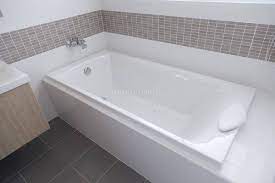Freestanding bathtubs are the true protagonists of the bathroom. Not only do they capture all eyes, but they are the object of desire for everyone who is before them. This type of bathtub stands out because it is not embedded in any wall or corner. That is why they are also called freestanding or island bathtubs.
A toilet with a free-standing bathtub is much more than a luxury bathroom. It means having a spa at home, or what is the same, a place of well-being, disconnection and pleasure.
A bit of history about bathtubs
Although having a bathroom as we know it today is relatively modern (barely 150 years old), it is known that the Greeks already enjoyed the bathtub more than 3,500 years ago. In fact, on the Greek island of Crete you can visit the Palace of Knossos, famous not only for housing the labyrinth of the Minotaur, but also for having the oldest surviving bathtub in the queen’s bathroom. And it’s not that different from now.
The first bathtubs did not have the same shape as the current ones and over the centuries they have often changed materials, design and use. Bathtubs have been round, elongated, terracotta, polished stone, wood, marble, and even silver.
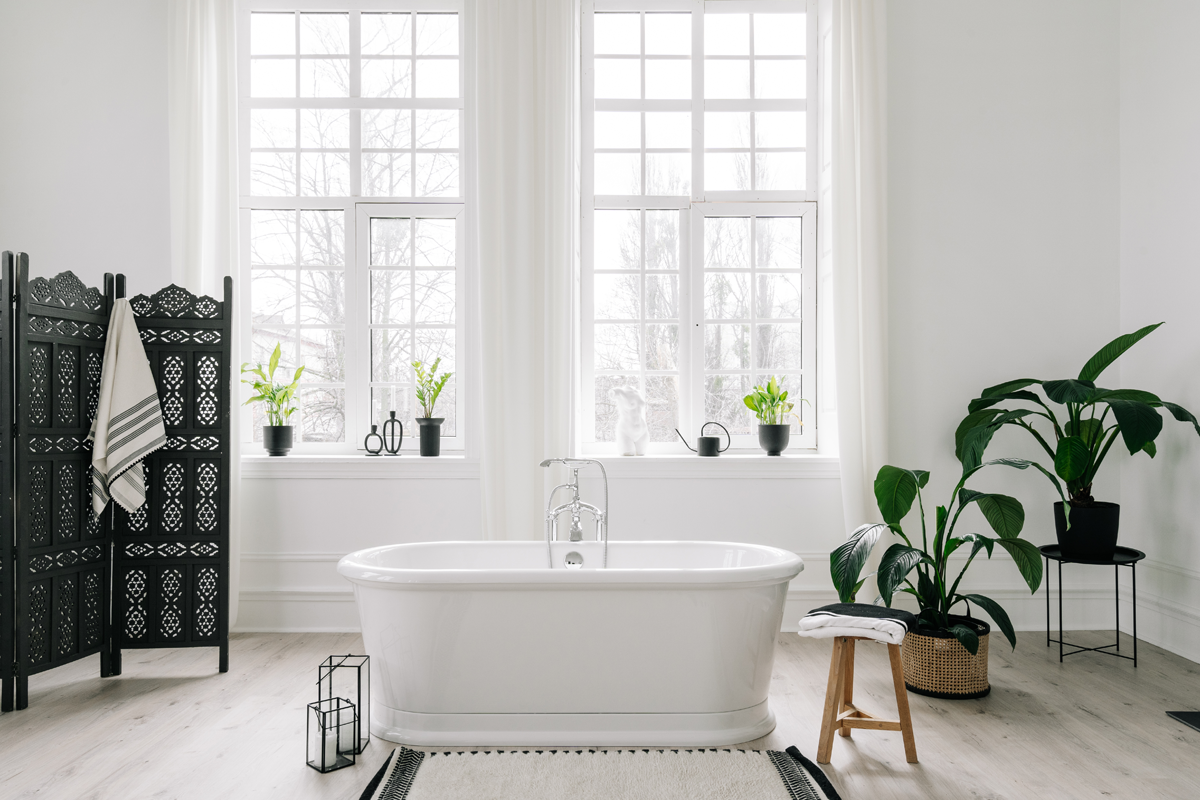
While the Greeks and Romans adored them (the latter are the creators of the famous baths), in the Middle Ages they failed to appreciate their hygienic and relaxing value. So little by little they fell into disuse for the majority of the population.
The first free-standing bathtub was the work of Level, a Parisian master boilermaker of the late 18th century. It was an ergonomic bathtub, elongated and accompanied by a stove. The problem was that, being made of copper, it was very expensive, so it was not until a few years later that the sheet metal was given a layer of varnish, saving its cost. Later the technique was refined: enamel replaced varnish and then zinc was chosen. At the end of the 19th century, free-standing bathtubs were already made of enameled cast iron, zinc and copper or granite and porcelain.
But it was not until the beginning of the 20th century that they began to set trends and became fashionable among the bourgeoisie and nobility. However, the free-standing bathtubs, which were made in a single piece of cast iron and covered with enameled ceramics, gradually fell into disuse. Due to the two World Wars, the price of iron became considerably more expensive, and they practically ceased to be marketed.
How to decorate a bathroom with a freestanding bathtub
Freestanding bathtubs give the bathroom elegance and distinction (here you can read design ideas for bedrooms with an open bathroom ). If something is clear, it is that it will become the main element of the room, especially if you place it in the center, as if it were an island in the middle of an oasis of well-being.
If your bathroom does not have all the desired space, it is best to place the bathtub close to the wall, but without it being stuck. Natural light and views of the landscape will add spaciousness to the environment and turn your bathroom into a true paradise place by placing the bathtub next to the window.
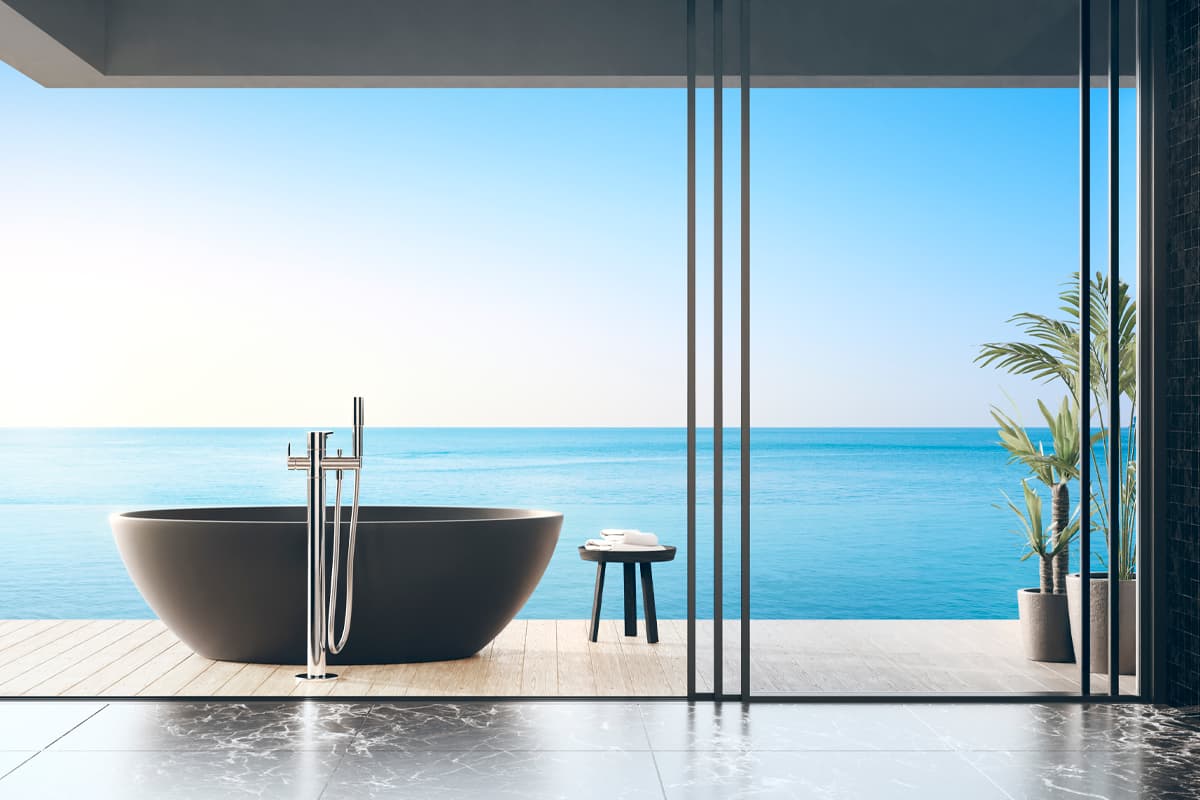
On a decorative level, we must not forget the accessories such as the taps or the rest of the furniture, auxiliary elements and even the flooring. Combining these elements with the bathtub you can achieve the style you want. And it is that having a free-standing bathtub is the key to a more spacious bathroom without reforms .
Types of exempt bathtubs
There are as many free-standing bathtubs as there are decorative styles for our bathroom. Whether they are old, more vintage designs or bathtubs with simple and minimalist cuts, the free-standing pieces stand out for their decorative strength.
Icon of the baroque and rococo style, today they are on the rise and not only that, having a free-standing bathtub makes your home revalue as they are a symbol of luxury and exclusivity, as well as offering relaxation and well-being.
Materials with which they are designed
The most classic style bathtubs are usually made of cast iron, instead enameled steel bathtubs with legs add a romantic atmosphere. Even so, both types of bathtub have in common their great thermal insulation capacity, and, therefore, they allow you to enjoy a relaxing bath for longer, since it maintains the temperature of the water.
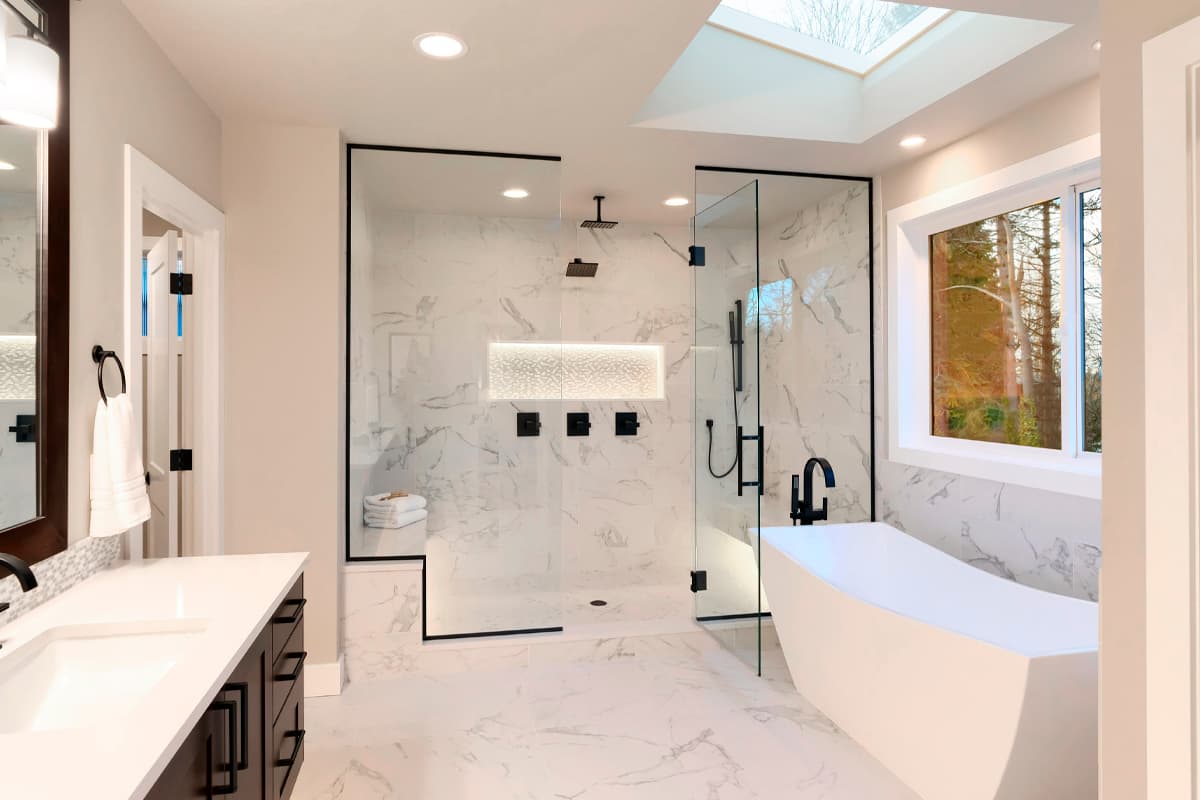
Another type of exempt bathtubs are those that have a minimalist design, with clean and simple lines, and are usually made of resin and mineral powder. These materials give the bathtub a pleasant and warm finish.
You will also find microcement-free bathtubs, with industrial airs, made of copper, zinc or even wood, like the Japanese ones.
Advantages and disadvantages
Probably almost everyone would like to have a freestanding bathtub in their bathroom. Not only because of the elegance that they impose on the room, but because in the collective imagination they offer an intangible value. They stand as temples of well-being. A place where stress has no place.
It is not known what Archimedes’ bathtub was like, the one that turned out to be the key for the Greek scientist to discover the physical law that today bears his name. But today it would surely be a freestanding bathtub.
However, it should be noted that not everyone can enjoy a free-standing bathtub. If the bathroom does not have too much space, everything that a free-standing bathtub provides (elegance, well-being, relaxation…) can disappear.
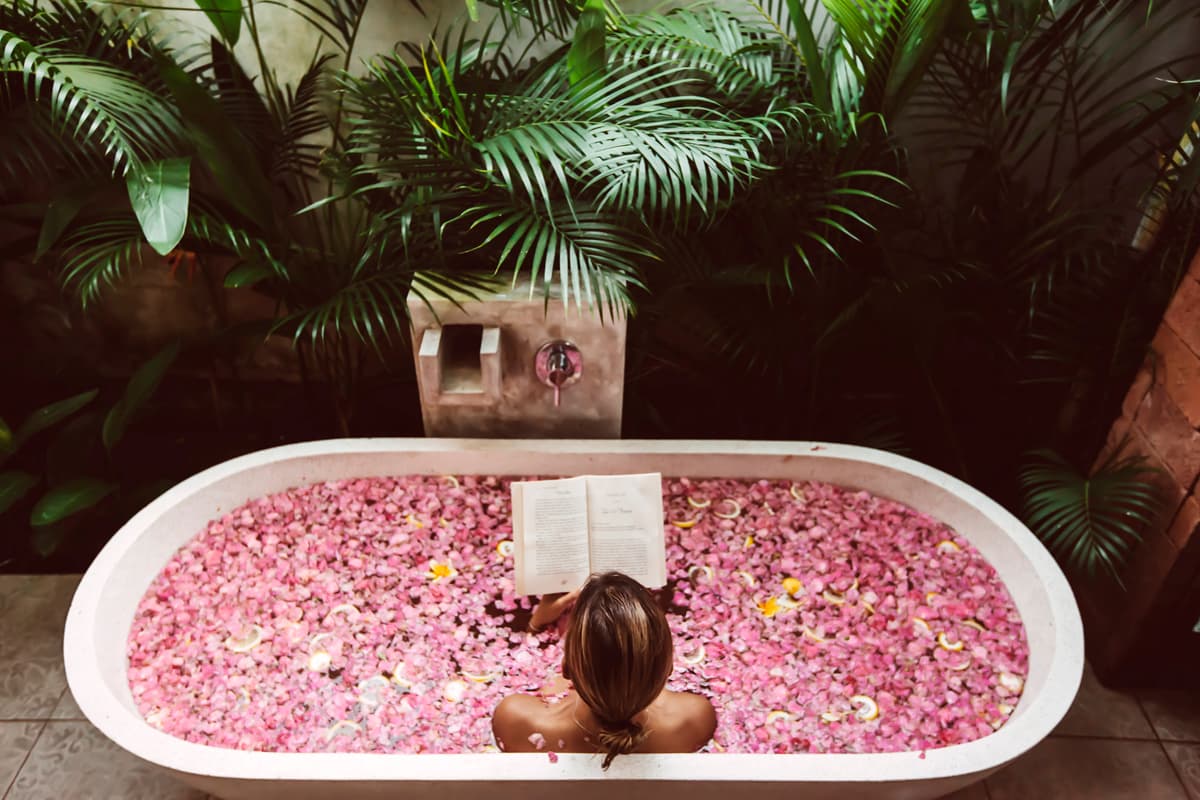
The reason is simple: it is an element of great visual weight that needs “air” to breathe. For example, that around it there is at least 90 cm free. If not, the effect can be counterproductive and turn the bathroom into a burdensome and stressful place.
Another element to keep in mind is that the installation must be done well. And not because it is difficult but because you have to take into account that the drains will be visible, just like the water intakes. So any imperfections when installing will also be exposed.
If what you are looking for is functionality and practicality, then a free-standing bathtub, but if you do not have the possibility of having a shower in the bathroom, it is not the solution.
However, the advantages of having a free-standing bathtub are also multiple:
- Intangible value : the feeling of having a luxury bathroom is guaranteed with the presence of a free-standing bathtub.
- Easy installation : although it is true that the installation must be done taking care of even the smallest detail, on a technical level it is easy. In addition, they can be placed on any type of pavement.
- They maintain surface heat.
- They are very pleasant to the touch.
- Not only in the bathroom: you can install them in the bedroom, in the garden or even on the terrace.
- You can choose the one that best suits your decorative style.
